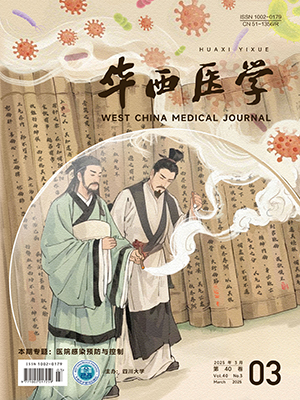| 1. |
An Z, Braseth AL, Sahar N. Acute cholangitis: causes, diagnosis, and management. Gastroenterol Clin North Am, 2021, 50(2): 403-414.
|
| 2. |
Parıldar Z, Çınar C, Barutçuoğlu B, et al. Effects of percutaneous transhepatic biliary drainage on renal function in patients with obstructive jaundice. Diagn Interv Radiol, 2011, 17(1): 74-79.
|
| 3. |
Kimmings AN, van Deventer SJ, Obertop H, et al. Endotoxin, cytokines, and endotoxin binding proteins in obstructive jaundice and after preoperative biliary drainage. Gut, 2000, 46(5): 725-731.
|
| 4. |
Pavlidis ET, Pavlidis TE. Pathophysiological consequences of obstructive jaundice and perioperative management. Hepatobiliary Pancreat Dis Int, 2018, 17(1): 17-21.
|
| 5. |
Sauvanet A, Boher JM, Paye F, et al. Severe jaundice increases early severe morbidity and decreases long-term survival after pancreaticoduodenectomy for pancreatic adenocarcinoma. J Am Coll Surg, 2015, 221(2): 380-389.
|
| 6. |
Csendes A, Fernandez M, Uribe P. Bacteriology of the gallbladder bile in normal subjects. Am J Surg, 1975, 129(6): 629-631.
|
| 7. |
Flemma RJ, Flint LM, Osterhout S, et al. Bacteriologic studies of biliary tract infection. Ann Surg, 1967, 166(4): 563-572.
|
| 8. |
Karsten TM, van Gulik TM, Spanjaard L, et al. Bacterial translocation from the biliary tract to blood and lymph in rats with obstructive jaundice. J Surg Res, 1998, 74(2): 125-130.
|
| 9. |
Lygidakis NJ, Brummelkamp WH. The significance of intrabiliary pressure in acute cholangitis. Surg Gynecol Obstet, 1985, 161(5): 465-469.
|
| 10. |
齐明, 周陶然. 胆汁细菌药敏和抗菌药物应用调查. 外科研究与新技术, 2017, 6(1): 5-7.
|
| 11. |
徐丽娟, 李素娟. 296 份胆汁细菌培养结果分析. 甘肃医药, 2017, 36(4): 290-291.
|
| 12. |
Negm AA, Schott A, Vonberg RP, et al. Routine bile collection for microbiological analysis during cholangiography and its impact on the management of cholangitis. Gastrointest Endosc, 2010, 72(2): 284-291.
|
| 13. |
Wang L, Lin N, Xin F, et al. A systematic review of the comparison of the incidence of seeding metastasis between endoscopic biliary drainage and percutaneous transhepatic biliary drainage for resectable malignant biliary obstruction. World J Surg Oncol, 2019, 17(1): 116.
|
| 14. |
Hu QL, Liu JB, Ellis RJ, et al. Association of preoperative biliary drainage technique with postoperative outcomes among patients with resectable hepatobiliary malignancy. HPB (Oxford), 2020, 22(2): 249-257.
|
| 15. |
Liu F, Li Y, Wei Y, et al. Preoperative biliary drainage before resection for hilar cholangiocarcinoma: whether or not? A systematic review. Dig Dis Sci, 2011, 56(3): 663-672.
|
| 16. |
Howard TJ, Yu J, Greene RB, et al. Influence of bactibilia after preoperative biliary stenting on postoperative infectious complications. J Gastrointest Surg, 2006, 10(4): 523-531.
|
| 17. |
Park JW, Lee JK, Lee KT, et al. How to interpret the bile culture results of patients with biliary tract infections. Clin Res Hepatol Gastroenterol, 2014, 38(3): 300-309.
|
| 18. |
Suna N, Yıldız H, Yüksel M, et al. The change in microorganisms reproducing in bile and blood culture and antibiotic susceptibility over the years. Turk J Gastroenterol, 2014, 25(3): 284-290.
|
| 19. |
Schneider J, De Waha P, Hapfelmeier A, et al. Risk factors for increased antimicrobial resistance: a retrospective analysis of 309 acute cholangitis episodes. J Antimicrob Chemother, 2014, 69(2): 519-525.
|
| 20. |
Illés D, Urbán E, Lázár A, et al. Changes in antibiotic resistance in cholangitis. Our clinical experience. Orv Hetil, 2019, 160(36): 1437-1442.
|




